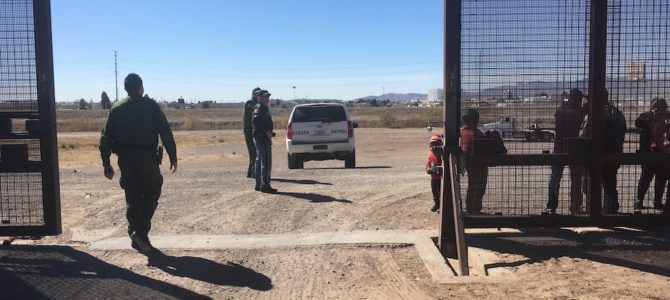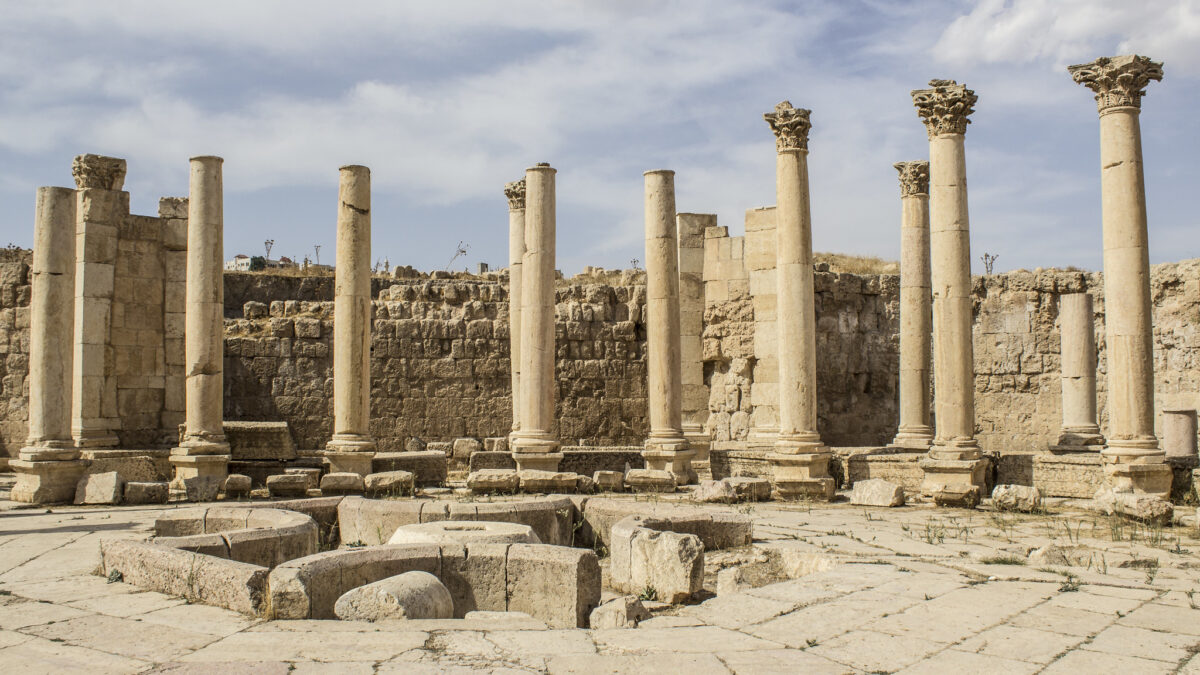
New York Times columnist Thomas Friedman, who once wrote an entire column about a Paris cabbie who didn’t talk to him, wants you to know that he went down to the southern border, looked around, and concluded something’s not quite right down there.
To be fair, Friedman’s recent op-ed on the border crisis represents probably one of the most intrepid reporting trips he’s ever done. Instead of just jotting down random things he saw in the airport, Friedman actually toured the port of entry at San Ysidro and had Border Patrol drive him out to where the border fencing ends, “and craggy valleys beckoning drug smugglers, asylum seekers and illegal immigrants begin.”
This place where the fence ends, Friedman tells us, is for some reason “a very troubling scene.” But a steel fence and some craggy hills is not a troubling scene. You know what’s a troubling scene? Thirteen hundred Cubans forcibly setting fire to a detention center in Chiapas, Mexico, then breaking down the gates and sprinting away, which happened two days after Friedman’s column ran. Here’s what it looked like:
Momento en el que huyen decenas de migrantes centroamericanos y cubanos tras amotinarse en la estación del INM de Tapachula, Chiapas. pic.twitter.com/SNXBpxX72A
— Azteca Noticias (@AztecaNoticias) April 26, 2019
A troubling scene is the three-year-old boy Border Patrol agents found alone and crying in a corn field in south Texas last week, abandoned by smugglers, his name and a phone number written on his shoes.
A troubling scene is hundreds of travelers, including women and infants, precariously clinging to the top of a freight train in southern Mexico, hoping to survive the dangerous journey north without losing a limb, or worse.
There’s really no end to troubling scenes along the border—drug tunnels, rape houses, families being held under a bridge in El Paso for days—but you won’t hear about them from Friedman. His big takeaway from driving around with Border Patrol was what you might expect from a columnist who’s built a career reducing complex problems to zingy one-liners: “The whole day left me more certain than ever that we have a real immigration crisis and that the solution is a high wall with a big gate — but a smart gate.”
A high wall and a smart gate. Thanks, Tom! Who knew?
The Border Crisis Is an Asylum Crisis
Friedman’s analysis—which isn’t all wrong, by the way, and in fact is probably the only one you’ll read in The New York Times that acknowledges we have a crisis on the border—suffers above all from a lack of clarity about what the crisis is. Put in simple, Friedman-like terms, we have an asylum crisis at the southern border. That’s it. The solution isn’t a wall or a gate—not even a smart gate. The solution is asylum reform.
Right now, Central American families and minors are traveling, by any means available, to the U.S.-Mexico border in order to turn themselves in and claim asylum. Because of our outdated and ineffectual asylum system, almost all of them are released into the United States to begin court proceedings that will take years. For families and minors, it is a de facto open borders policy. They know this, and so do smugglers and drug cartels that are now making billions off the crisis (something Friedman fails to mention).
Everything else—Trump’s wall, immigration reform, even the politics of foreign aid to Central America—can largely be separated from what’s causing all those troubling scenes described above and all the human misery that comes with them. The crucial points to understand are that federal law leaves U.S. Customs and Border Protection with vanishingly few options when families and minors turn themselves in after crossing the border, and this state of affairs has created and enormous black market for human smuggling.
Friedman seems to have missed this, despite a good-faith effort. He writes that he wants “to understand how this wall system works,” so he goes out to the newly built fence east of San Ysidro with Border Patrol. Where the wall ends, he says, “human smugglers begin.”
Not exactly. Human smuggling is happening right now all up and down the border, in fenced areas and un-fenced ones, but mostly in the Rio Grande Valley and El Paso, where Border Patrol are apprehending thousands of people every day. There’s some fencing in both of these sectors (although not as much as Border Patrol says it needs) but that’s beside the point. For people seeking asylum, fencing isn’t a problem because the fences are entirely on U.S. soil. If they show up on the south side, they can claim asylum and federal officials must take them into custody.
As things now stand, federal border facilities are overwhelmed, federal agencies are at the breaking point, and large numbers of illegal immigrants with no money, no food, and nowhere to sleep are being released into border communities that are unable to care for them. That’s the crisis.
Our Asylum System Is Producing Misery
Maybe we Americans can’t, as a people, agree on comprehensive immigration reform. But we don’t need to, at least not right away. We first need to agree that our flawed, outdated asylum system has produced this crisis, and only by reforming it can we end the crisis.
Does Friedman agree? It’s not clear. Among his concluding list of solutions is this platitudinous gem: “we need to rethink who is entitled to asylum, so people fleeing economic dislocation don’t overwhelm our borders and harden our hearts to people truly fleeing tyranny.”
Someone should pull Friedman aside and tell him that “people fleeing economic dislocation” don’t qualify for asylum under current U.S. law, yet they’re overwhelming our borders anyway. Why? Because our asylum system is not designed to handle them.
It need not be this way. If Central American families fleeing economic dislocation, and thus not eligible for asylum, were quickly turned back at the border, they would stop paying smugglers and cartels thousands of dollars per person to make the journey north. Word would get back to communities in their home country that it isn’t worth it, don’t come, you can’t get in by claiming asylum.
Right now, growing numbers of people in Guatemala and Honduras and El Salvador are selling everything they have, breaking up their families, going into debt to dangerous men, putting their children in great peril, all to afford a trip to the border. As long as we refuse to reform our asylum laws, and allow the broken system that perpetuates this massive black market to endure, we’ll be complicit in this tragedy.









